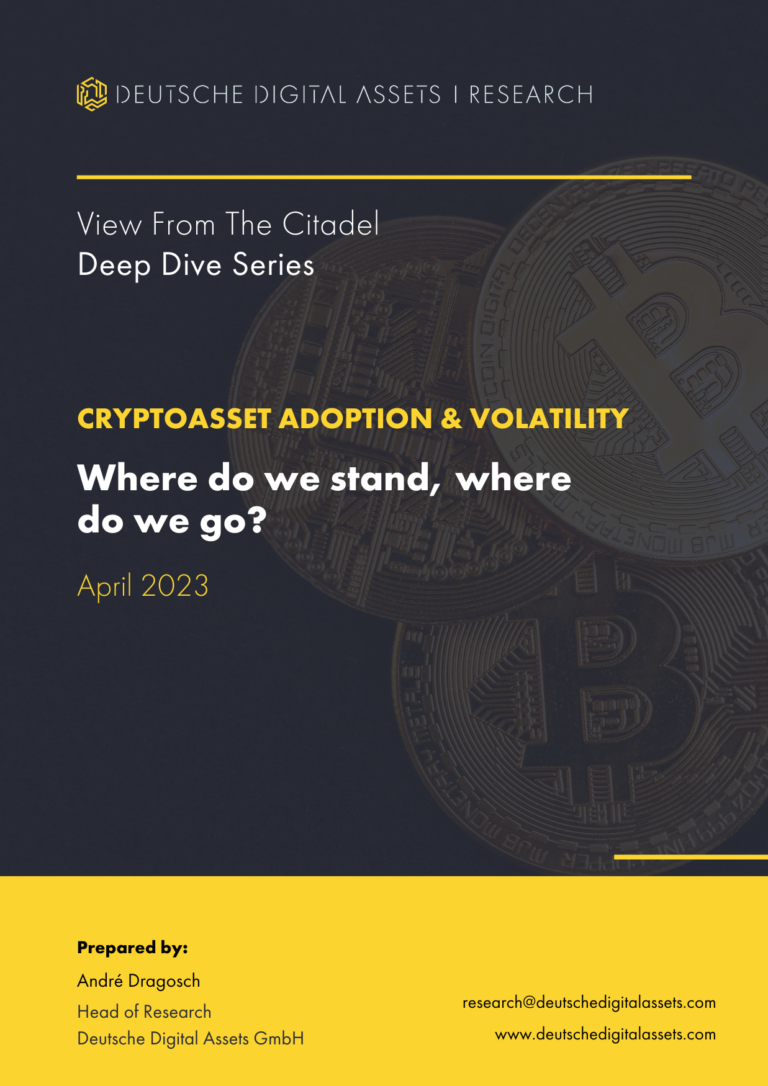Learn about central bank digital currencies (CBDCs) and why they are not a threat to Bitcoin.

The emergence and increasing popularity of Bitcoin have given central banks around the world a run for their money. Consequently, they have been speeding up the process of upgrading their infrastructure to create their own sovereign digital currencies.
Experts have figured that most of Bitcoin’s amazing features originate from the underlying open-source blockchain technology that powers its network. Hence, central banks from all over the world are actively exploring ways to make use of this technology to create central bank digital currencies (CBDCs).This very fact has sparked concerns with some crypto investors, as they fear that the advent of CBDCs will drive people away from using Bitcoin.
At first glance, it might indeed seem as if CBDCs are a true competitor that will replace cryptocurrencies like Bitcoin and disrupt the crypto market in due time. But when revisited more closely, such a conclusion doesn’t really hold water.
Read on to learn about the concept of CBDCs, their opportunities and downsides, and why we believe that CBDCs are no threat to the best-performing asset of the decade.
What Are CBDCs?
CBDCs represent the digitized version of a nation’s fiat currency issued by a respective central bank on a distributed ledger or blockchain technology.
Traditionally, the currency of most countries came in the form of banknotes and coins that function as an economic area’s generally accepted means of payment. However, through improvement in technology, the usage of money has been shifting to the digital sphere.
Instead of using physical money, electronic, credit-based money services enabled by banks and payment providers have emerged, with accounts being recorded digitally. Although physical cash hasn’t gone extinct, more and more countries are increasingly moving towards less and less cash usage. Moreover, some countries like China or Sweden have almost out phased physical cash.
On the surface, a CBDC looks awfully similar to today’s digital credit money. However, its underlying mechanisms work quite differently. Unlike the credit money of today, CBDCs represent the direct liability of central banks and not commercial banks. As such, they are based on a different technological framework.
While there’s no general framework for CBDCs, most central banks’ research and experiments revolve around the technology introduced by Bitcoin back in 2009.
In today’s world, banks typically store records of transactions and how much money people own in a centralized ledger while the central bank dictates monetary policy. On the other hand, in a CBDC system, several copies of the same financial records are distributed across many financial entities. The central bank manages them from the top.
This setup is called a permission blockchain infrastructure where only pre-authorized participants can modify or access the ledger. This is in contrast to permissionless blockchains that aren’t controlled by one single authority. Nonetheless, CBDCs are considered as a way to adopt distributed ledger technology while preserving the attributes of fiat currencies.
Why Are CBDCs Gaining Popularity?
With more and more central banks actively looking to potentially deploy a CBDC, their popularity has been growing. Some countries have already launched their CBDCs leveraging distributed ledger technology. As these early examples show, such implementations can potentially change how fiat money functions.
Through distributed ledger technology, CBDCs can improve payment efficiency, promote increased transparency in regards to financial flows, facilitate compliance with anti-money laundering, and combat the financing of terrorism (AML-CFT).
Additionally, the distributed nature of DLTs systems enables CBDCs to lower transaction costs and settlement time (particularly for cross-border payments), bolster system integrity, and lower barriers to financial inclusion.
In essence, CBDCs aim to bring the benefits found in Bitcoin to the regulated fiat-based system built around central banking. This sounds like good news to individuals who, although admiring the benefits of Bitcoin, have been hesitant to use it due to its high volatility and unregulated nature.
Mainly due to the effect of the Covid-19 pandemic and the emerging threat of stablecoins, central banks are feeling obliged to accelerate operations to launch CBDCs.
According to a survey among central banks by the Bank for International Settlements (BIS), 14% have released pilot projects, and 86% are actively researching the potential for CBDCs, with 60% already experimenting with the technology.
As of February 2022, nine countries have launched their CBDCs: The Bahamas, Antigua and Barbuda, St. Kitts and Nevis, Montserrat, Dominica, Saint Lucia, St Vincent and the Grenadines, Grenada, Nigeria.
CBDCs: Opportunities & Concerns
Opportunities
Frictionless payments
CBDCs remove the risks involved in bank failures and third-party platforms. With CBDCs, consumers can directly connectto central banks, liberating them from credit and liquidity risks commercial banks may encounter in times of market stress.
Low-cost cross-border payments
Since central banks manage CBDCs directly, they can reduce the cost of cross-border transactions by connecting different currency systems. Interoperability between CBDC systems can help improve this. CBDCs can cut cross-border costs and lower money settlement from days to seconds.
Potential on-ramp to Bitcoin
CBDCs could also help boost the user base of Bitcoin as its usage will require people to learn about DLTs and other crypto-related concepts. Moreover, in the eyes of the general public, governments using DLTs for their CBDCs will validate blockchain technology and prove its authenticity.
This move will also benefit Bitcoin since it’s the mother of all digital currencies. And, if at some point, CBDCs are allowed to integrate with crypto exchanges, they might even replace stablecoins and prove to be an important fiat on-ramp.
Concerns
Extreme financial surveillance
While the centralized nature of CBDCs may help governments gain insights to combat the financing of terrorism and money laundering, privacy concerns abound. The government will have a way to spy on their citizens more efficiently, particularly their financial life. This is a red flag.
Could tie into a social credit score
A CBDC may reduce the privacy users enjoy when using physical cash. Once privacy infringement occur, it can lead to increased tracking by a central authority, possibly resulting in the adoption of a social credit score. In China, for example, the government is tracking the behavior of citizens through a “social credit system” program. The program that rewards and punishes them based on individual scores. And with China’s DCEP already in its advanced pilot phase, privacy may potentially come under increased pressure.
Being denied access to money
Since governments and their central banks will heavily control CBDCs, people can be denied access to money if mandated by the government. All it will take is blacklisting the wallet address of an individual.
Why CBDCs Don’t Threaten Bitcoin
Since Bitcoin introduced blockchain technology, many projects emerged as a potential upgrade to Bitcoin. Examples include alternative coins and stablecoins.
While many of them have been called Bitcoin killers, all of them boosted demand for Bitcoin. They have improved its overall market acceptance and spurred innovations within the wider Bitcoin ecosystem.
Although the rise of CBDC could be a threat to Bitcoin, a closer look at how they work and function leads us to conclude: CBDCs are no real threat.
CBDCs are centralized, Bitcoin is decentralized
Because a nation’s central bank issues CBDCs, they remain centrally controlled and managed. This creates room for a central point of failure. As a result, this leaves citizens with no choice but to trust the government to act right. Conversely, Bitcoin is decentralized. No central authority owns and manages the Bitcoin network.
Equal peers manage the entire Bitcoin network. They reach a consensus on the state of its ledger. No single party can manipulate the ledger or prevent another person from accessing the network. This means the usage of bitcoin, unlike CBDCs, isn’t restricted to particular regions. Anyone can access Bitcoin’s global network using just an internet connection. This drastically reduces the barriers to entry.
Bitcoin’s has a limited supply
Fiat currencies are inflationary with an unlimited supply. CBDCs don’t change this fact. So, governments can mint as many units as they deem fit. Just the way physical banknotes are printed at will.
On the contrary, Bitcoin’s supply is limit to of 21 million coins. This makes it a good choice for long-term investment. As a result, Bitcoin outperformed every other asset in the past decade.
Currently, Bitcoin is primarily an investment, not a currency. This differentiates Bitcoin from CBDCs, which are seen to perform best as transactional currencies.
CBDCs aren’t private
Although the distributed nature of blockchain increases Bitcoin’s transparency and traceability, the cryptographic techniques deployed to ensure that the identity of users remains pseudonymous. The user can, therefore, protect their privacy to a certain extent. Many Bitcoin users, who typically value their privacy wouldn’t want to risk leaving the Bitcoin network. On CBDC networks, privacy infringement will likely occur.
As this brief comparison shows: CBDCs don’t offer any major additional attractive features to Bitcoin users.
On the contrary. Instead of posing a serious competitor, CBDCs will serve a complimentary purpose similar to stablecoins. How? By potentially establishing some beneficial regulations that further legitimize the crypto ecosystem.
About Iconic Funds
Iconic Asset Management is the bridge to crypto asset investing through trusted investment vehicles. We provide investors both passive and alpha-seeking strategies to crypto, as well as venture capital opportunities.
We deliver excellence through familiar, regulated vehicles offering investors the quality assurances they deserve from a world-class asset manager as we champion our mission of driving crypto asset adoption.
Recent News
- How accurate is the Bitcoin Stock-to_Flow Model?
- Bitcoin Education Will Pave the Way for Hyperbitcoinization
Iconic in Press
- Das Investment: Kryptowährungen kommen 2022 im Mainstream an
- Private Banking Magazin, Bitcoin – das perfekte Beispiel für ein ESG-Investment?
- Institutional Money, Krypto-Manager steigt bei Family Office ein
- Morningstar, Iconic Funds Expands Product Range With a Physical Ethereum ETP
Recent Research Reports

How did portfolios perform during the pandemic? ➡ Download here
Analyzing the Primary Value Drivers of Leading Cryptocurrencies ➡ Download here
How Effective are Common Investment Strategies with Bitcoin? ➡ Download here
Investigating the Myth of Zero Correlation Between Crypto Currencies and Market Indices ➡ Download here
For further information, please visit deutschedastg
Legal Disclaimer
The material and information contained in this article is for informational purposes only.
Iconic Holding GmbH, its affiliates, and subsidiaries are not soliciting any action based upon such material. This article is neither investment advice nor a recommendation or solicitation to buy any securities.
Performance is unpredictable. Past performance is hence not an indication of any future performance.
You agree to do your own research and due diligence before making any investment decision with respect to securities or investment opportunities discussed herein.
Our articles and reports include forward-looking statements, estimates, projections, and opinions. These may prove to be substantially inaccurate and are inherently subject to significant risks and uncertainties beyond Iconic Holding GmbH’s control.
We believe all information contained herein is accurate, reliable and has been obtained from public sources. However, such information is presented “as is” without warranty of any kind.














